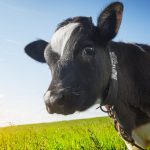
The number of dairy farms in the state has plummeted from 2,500 in 1993 to 377 in 2018, according to the Washington Farm Bureau, which represents the mostly family-owned businesses. Four years of low milk prices have led numerous farmers to call it quits.
Dairy farms also face new state regulations for handling and storing cow manure that one dairy consultant estimates have initial costs of $300,000 to $2 million. Requirements include special liners for the lagoons holding the manure, and a mandatory leak-detection system.
But Yakima Valley dairy farmers were unprepared for what befell them on Feb. 9. A storm with wind gusts of 50 to 60 mph and temperatures in the low to mid-teens sent wind chills plummeting near zero degrees, leaving 1,850 dairy cattle dead in the span of a few hours. With each cow valued by the dairies at $2,000, the loss was $3.7 million.
Though dairy farmers can apply for reimbursement of 75 percent of the livestock’s market value for weather-related deaths through the U.S. Department of Agriculture’s Farm Service Agency, the loss hit Yakima Valley farmers hard.
“What next? Biblical plagues? A violent tornado?” says Stu Turner, a West Richland-based agronomist and consultant to the dairy industry. “They’ve faced almost everything that you can think of that’s negative.”
Dairy cows have died by the hundreds – even the thousands – before in blizzards. An estimated 35,000 cows died in December 2015 when a winter storm dubbed Goliath swept through West Texas and New Mexico. Tens of thousands more died in an October 2013 snowstorm in South Dakota.
But last month’s tragedy drew national coverage, spurring angry reaction from animal-rights groups and condemnation on the internet.
PETA announced it would purchase either a billboard or maybe transit ads in the Yakima area to commemorate the deaths. The image will be of a mother cow and her calf, next to the words, “Not Your Mom? Not Your Milk! Choose Vegan.”
Jason Sheehan, who lost 200 cows at his J & K Dairy, says most of the dairy farmers who lost cows don’t want to be part of media coverage. Not far away from his farm is a dairy that lost 600 cows, he says, but that farmer didn’t want publicity.
“No matter how good a job we do, how well we care for the animals, people tend to turn it around on us,” Sheehan says. “There’s lot of keyboard warriors out there these days.”
In fact, few Americans know much about farm life. In 2016, only 1.5 percent of Americans were employed in agriculture, forestry, fishing or hunting, according to the U.S. Bureau of Labor Statistics.























